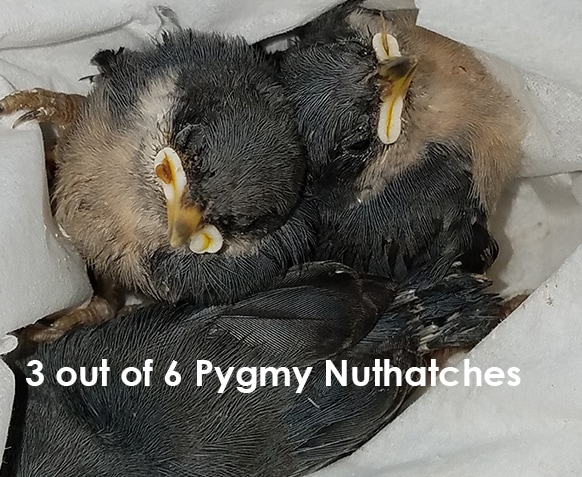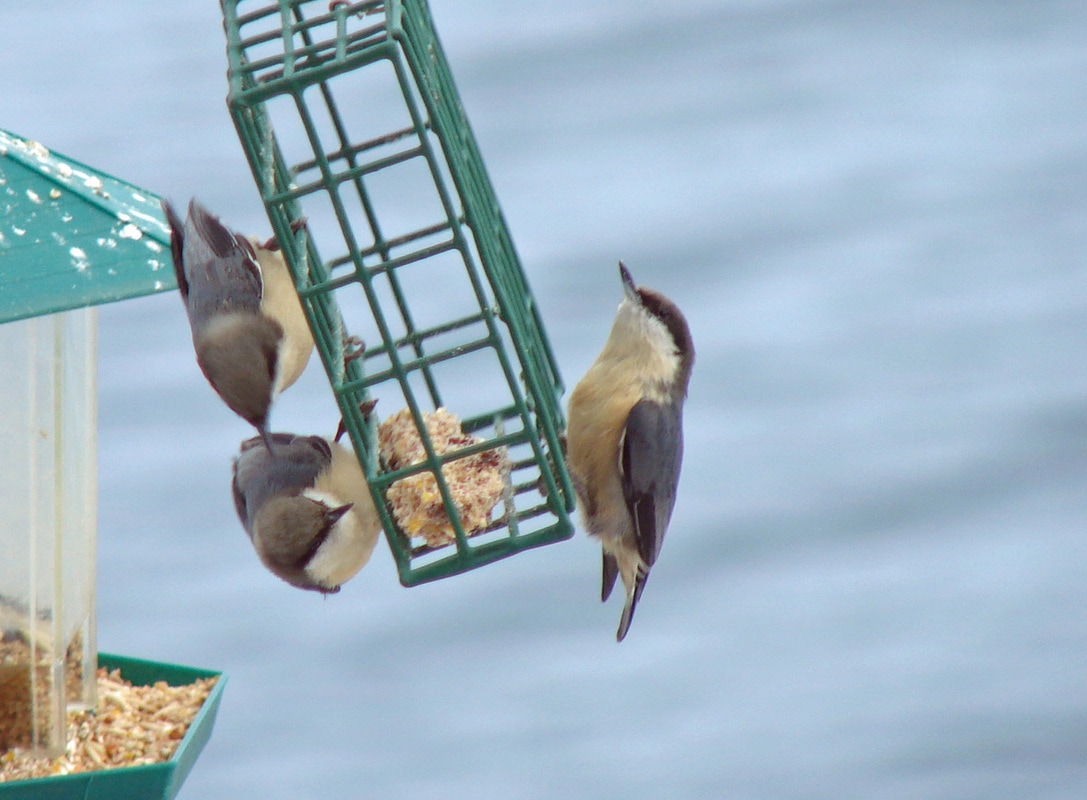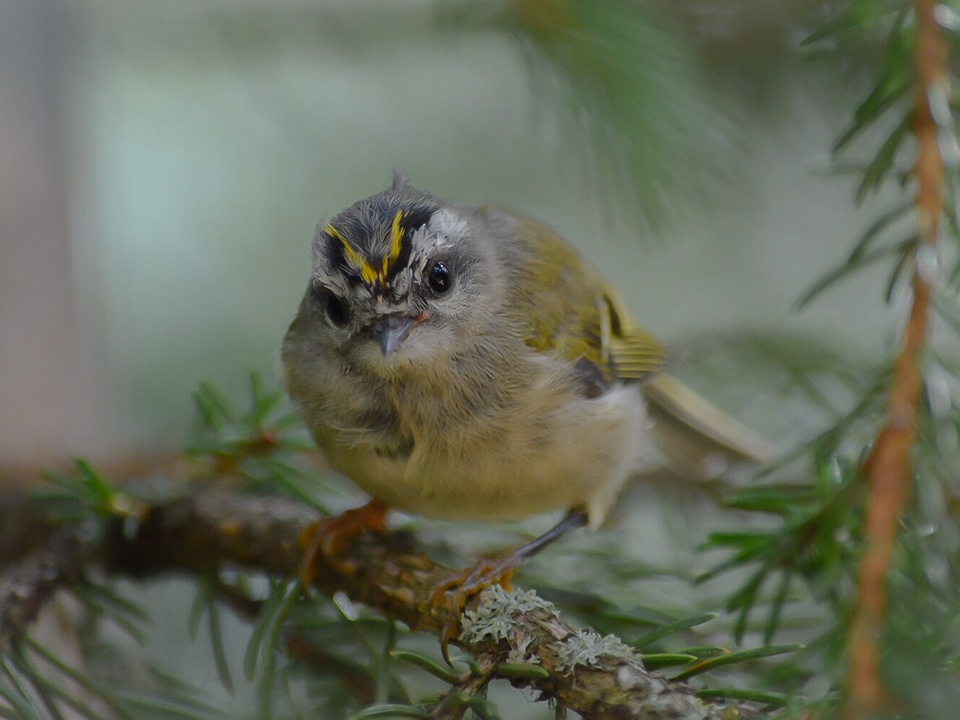|
Who doesn't love these little Pygmy Nuthatches! Got a call about one falling out of its nest...then there was two....then there was three! They were getting too big for the tiny cavity the parents had chosen which was right in the crook of a split tree trunk. This was an excellent example of how you can renest some babies and continue to keep a family of birds together. We got an appropriate sized box for this kind of bird, installed a metal edging for predator protection around the hole, and then got it up on the tree. Now that was challenging, and we had some much needed help by a crew of guys with a really tall ladder (Thanks, you know who you are!). And voila' we had a new home for 6 baby nuthatches, and mom and pop took right to it and began feeding their crew. Let's hope they all make it! The trick to renesting is keeping the parents around until its done. That means leaving the babies there and making noise so the parents do not give up. It only takes a few minutes for some birds to give up - especially if their tree or limb has been actually taken down (summer is never a good time to trim trees!!!). Crying babies though will keep mom and pop around, have someone else keep them in a box and outside where they can be heard. Or just put the box up temporarily while you get a real box together. Screw the new box into the tree next to the old site, and put all babies - those that have fallen and any still in the cavity - into the new box. New box should have some ash bark or dried grasses in it (don't use hay, pine or cedar bark, or pine needles). Make sure new box has horizontal grooves up the insides so the babies can climb out. Get away as soon as possible so the family can settle down and reunite. (You can also wire in a wicker basket for an open nest type. Cover the wire with duct tape so it can be seen by birds and not hurt them). Anyone can do this! Its ideal when families can be kept together....little birds learn so much from their parents, like what kind of food to eat, where to find it, how to avoid predators, language skills for their flock, and so much more. We simply cannot replicate what mom and pop birds do in the wild with our rescues...its just not the same. If you know you have to take a tree or limb down, check for nests. Prepare to replace the nest or cavity BEFORE you take the limb or tree down. It does take planning, but it is the ethical and fair thing to do. photo by Jim Sedgewick, Wikimedia
It's baby season and they are out and about! Here are some tips on how to know if the bird on the ground you see needs help. First, is she injured? Did you see a cat, squirrel, dog, or other grab it? Is he a fledgling, or a smaller baby bird? Do you see other birds like him around, if it is a young bird? Can you find a nest? IF the bird is injured, is a baby bird too young to fly, looks ill and you can simply pick her up, if she does not fly away or run...rescue her. If it is a robin or dove (or junco and some other ground foraging bird, and is healthy, and you can leave cats/dogs inside, leave alone. Are the parents around? Most songbird fledglings will be able to stay up in the trees for the parents to feed as they develop strength to navigate the air and tree limbs. But sometimes they fall out or even jump out onto the ground. If the bird seems fine, is not shivering, the parents are nearby, and the baby seems active...put her back up in a tree. If she falls out again, call a rescue and ask for advice. Texting a picture with the story is time saving. Some birds find food on the ground (robins, juncos, sparrows, doves, jays), and so it may be fine that the bird is on the ground. If it is naked, or has tiny tubes around its feathers, then the baby is not ok on the ground. In the pictures above, you see the fox sparrow fledgling on the ground. He's a happy dude, finding bugs. No rescue needed. Nuthatch is also fine, sitting on a railing. Most of these birds (roll across to see names) if they are in distress, you will know it. They will look and act injured, quiet, not moving, eyes shutting, or unable to move at all. If they were must younger with pin feathers (tubes around the feathers) and on the ground, then we rescue or assess whether they can be put back in the nest (future post on that). The little tiny babies or those without a full body of feathers should never be on the ground. They have fallen, blown, or dragged from the nest. Rescue When in doubt, watch for awhile and call or text. Better safe then sorry. Next posts will be on what birds needing rescue might look like, some common rescues, and renesting fallen babes. |
AboutNative Bird Care's is celebrating its 10th anniversary! Our main focus is song, shore, and waterbirds. We offer specialized care and facilities for these extraordinary birds.. Archives
July 2024
Categories
|















 RSS Feed
RSS Feed